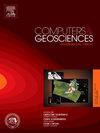SwinInver:基于斯温变换器和对抗训练的三维数据驱动地震阻抗反演
IF 4.2
2区 地球科学
Q1 COMPUTER SCIENCE, INTERDISCIPLINARY APPLICATIONS
引用次数: 0
摘要
随着深度学习在地震阻抗反演中的日益普及,三维数据驱动的方法引起了人们的极大兴趣。然而,两个关键挑战依然存在。首先,现有方法主要依赖卷积神经网络(CNN),由于卷积操作固有的局部性,CNN 无法捕捉地震数据的全局背景。这一局限性明显阻碍了其在反演盐体等复杂地下结构时的性能。其次,当前的反演框架容易出现过拟合,尤其是在有限的地震数据集上进行训练时。为了应对这些挑战,我们提出了 SwinInver,这是一种新颖的骨干网络,以 Swin 变换器为基本单元,结合高分辨率网络设计,促进复杂地下结构的全面全局建模。此外,我们还加入了对抗训练,以增强反演过程并有效减少过拟合。实验评估表明,SwinInver 在合成数据和现场数据场景中都大大超越了传统的基于 CNN 的方法,为地震阻抗反演提供了更准确、更可靠的框架。本文章由计算机程序翻译,如有差异,请以英文原文为准。
SwinInver: 3D data-driven seismic impedance inversion based on Swin Transformer and adversarial training
As deep learning becomes increasingly prevalent in seismic impedance inversion, 3D data-driven approaches have garnered substantial interest. However, two critical challenges persist. First, existing methodologies predominantly rely on Convolutional Neural Networks (CNNs), which, due to the inherent locality of convolutional operations, are inadequate in capturing the global context of seismic data. This limitation notably hinders their performance in inverting complex subsurface structures, such as salt bodies. Second, the current inversion frameworks are prone to overfitting, particularly when trained on limited seismic datasets. To address these challenges, we propose SwinInver, a novel backbone network that integrates the Swin Transformer as its fundamental unit, coupled with a high-resolution network design to facilitate comprehensive global modeling of intricate subsurface structures. Furthermore, we incorporate adversarial training to enhance the inversion process and effectively mitigate overfitting. Experimental evaluations demonstrate that SwinInver significantly surpasses conventional CNN-based approaches in both synthetic and field data scenarios, providing a more accurate and reliable framework for seismic impedance inversion.
求助全文
通过发布文献求助,成功后即可免费获取论文全文。
去求助
来源期刊

Computers & Geosciences
地学-地球科学综合
CiteScore
9.30
自引率
6.80%
发文量
164
审稿时长
3.4 months
期刊介绍:
Computers & Geosciences publishes high impact, original research at the interface between Computer Sciences and Geosciences. Publications should apply modern computer science paradigms, whether computational or informatics-based, to address problems in the geosciences.
 求助内容:
求助内容: 应助结果提醒方式:
应助结果提醒方式:


